Josh's Frogs
Why you should buy from us
How to Build A Crested Gecko Vivarium
How Do I Make a Crested Gecko Vivarium or Living Terrarium?
The beauty and convenience of vivaria make them a no-brainer housing option for crested gecko enthusiasts. Josh’s Frogs offers a variety of plants well-suited for crested geckos, as well as nearly everything needed to construct a stunning vivarium.
We recommend reading through this guide in full before gathering supplies or starting your project. Get reading and get creative!
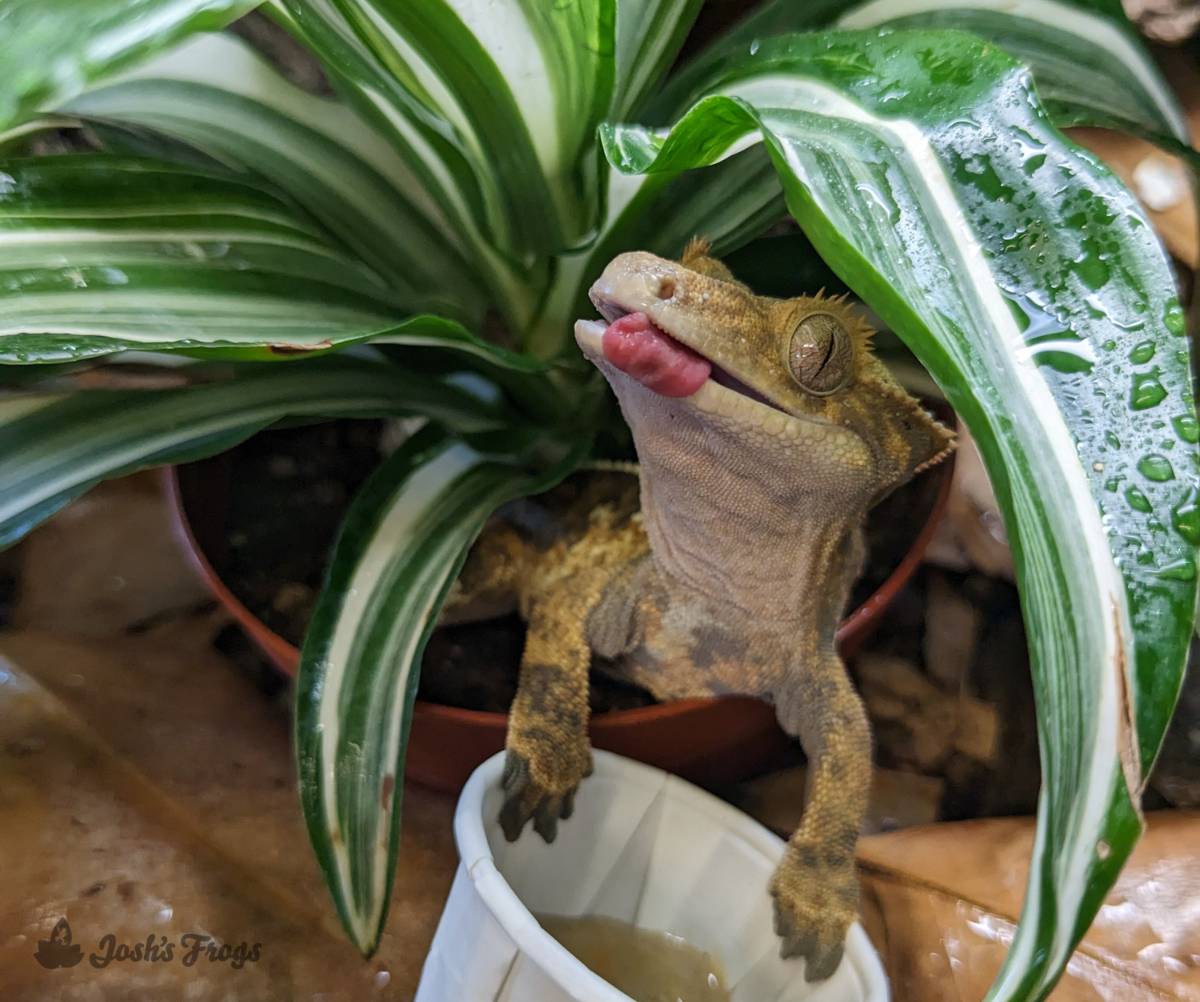
Supplies:
Glass Terrarium | Tropical BioBedding substrate | Leaf litter
Manzanita | Cork flats | Cork tubes | Net cups | Vivarium foam
Plants | Springtails | Isopods | Lighting | Disposable gloves
Back Ground Construction: (From your local hardware store)
Brown epoxy | Exacto knife
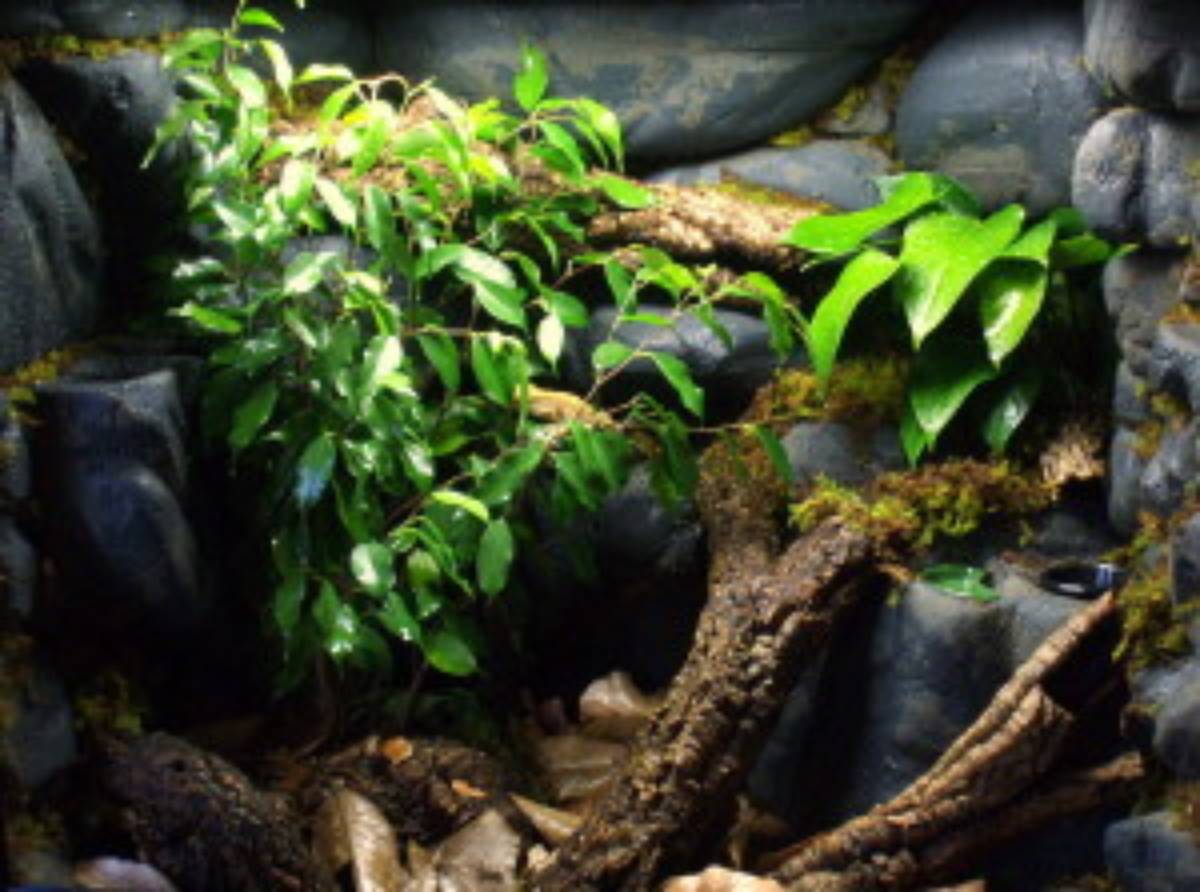 If you want a vivarium with a fake rock background, follow our how-to guide on How To Make a Fake Rock Background.
If you want a vivarium with a fake rock background, follow our how-to guide on How To Make a Fake Rock Background.
Plants and lighting:
The lighting needed for a vivarium will vary depending on the species of plants you want to keep. If you have an eye for bromeliads or other high-light species, bright lighting, such as LED lights, will be necessary. Less demanding plants will require less intensive lighting. See the plant and lighting guide below to guide your purchasing options. 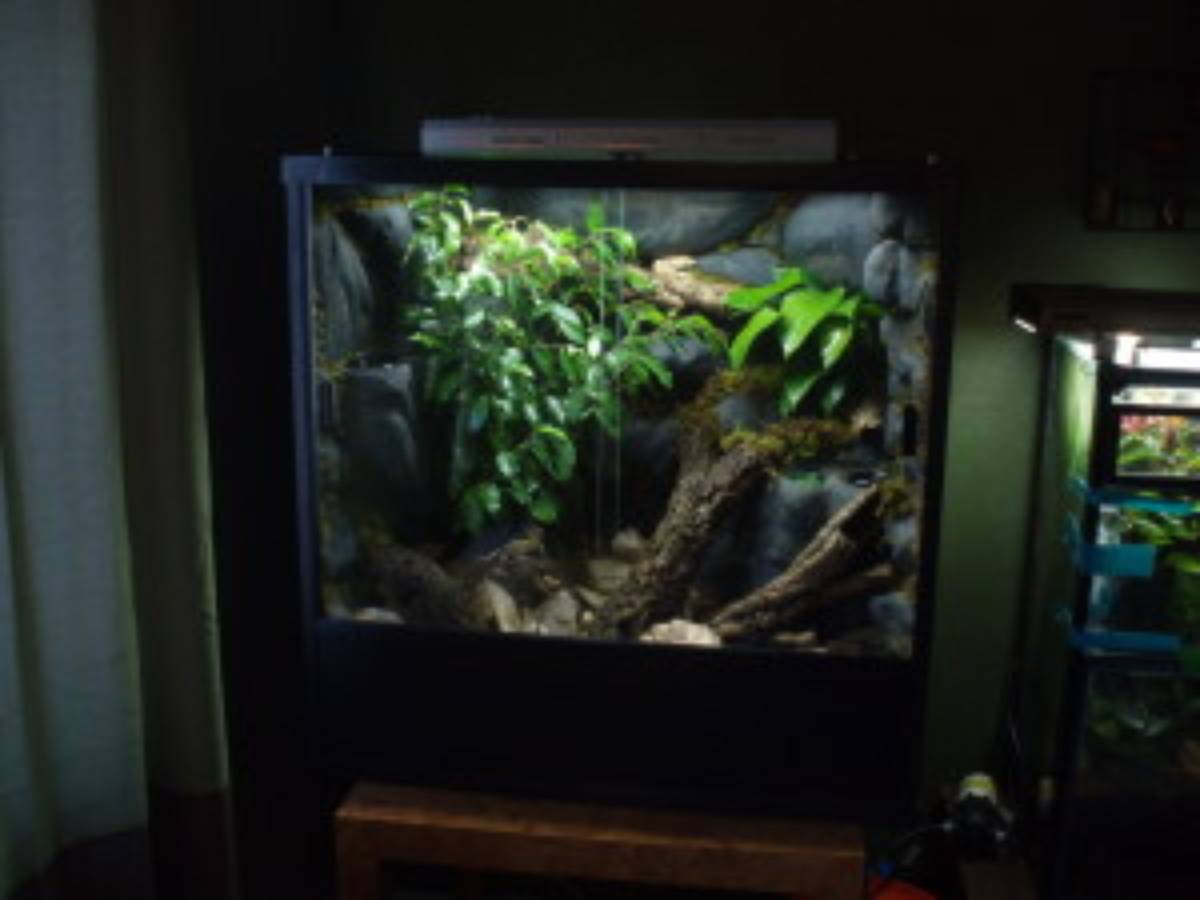
Choosing the enclosure:
The first step is deciding which enclosure to transform. One will need to consider the number and size of geckos that will reside in the enclosure. Unlike dart frogs, crested geckos produce a lot of waste for the vivarium clean-up crew to cycle. Utilizing a vivarium with more surface area for waste cycling is advised.
Keep in mind that crested geckos are arboreal, and also prefer tall habitats for climbing space. We recommend ten gallons of space per juvenile crested gecko, with a minimum of 20 gallons of space for one to two adults.
Choosing an Exo Terra or other front-opening enclosure will make background construction more enjoyable. An 18x18x24 tank makes an excellent choice for a vivarium housing one to two adult geckos.
Designing the hardscape:
Here is your opportunity to get creative and have fun with the project. Decide if you want to construct a background for your vivarium. Backgrounds can significantly enhance the beauty of vivaria and create valuable climbing structures for the inhabitants. Draw a rough sketch of the layout for your hardscape. The “hardscape” includes all non-living décor such as rocks, branches and substrates. Once your sketch is complete, pick out the cork flats, cork tubes and manzanita to fulfill your design. Cork flats make an excellent background object.
If you plan to infuse plants directly into the background, plant baskets (net pots/cups) can be hidden behind cork flats for simple potting. For this vivarium, we planned for small cork tubes on the ground and manzanita as a central horizontal climbing structure. Larger cork tubes also make excellent climbing structures.
New on the market, small or large Exo Terra Jungle Trees also make for a flexible, natural looking hardscape.
Constructing a background:
Lay the enclosure on its backside, preferably in a location where it can be left to sit and dry for two to three days. Arrange the pieces you chose for the background on the backside. Manzanita or cork tubes connected to the background can be arranged now, or immediately after the great stuff is sprayed.
Spray the foam in between the background pieces and around the bases of all climbing structures you want anchored. The foam will expand significantly, so there is no need to cover every inch of glass. The Great Stuff will need two to three days to expand and dry. You can test to see if it is dry by puncturing it with a needle and checking for wet residue. 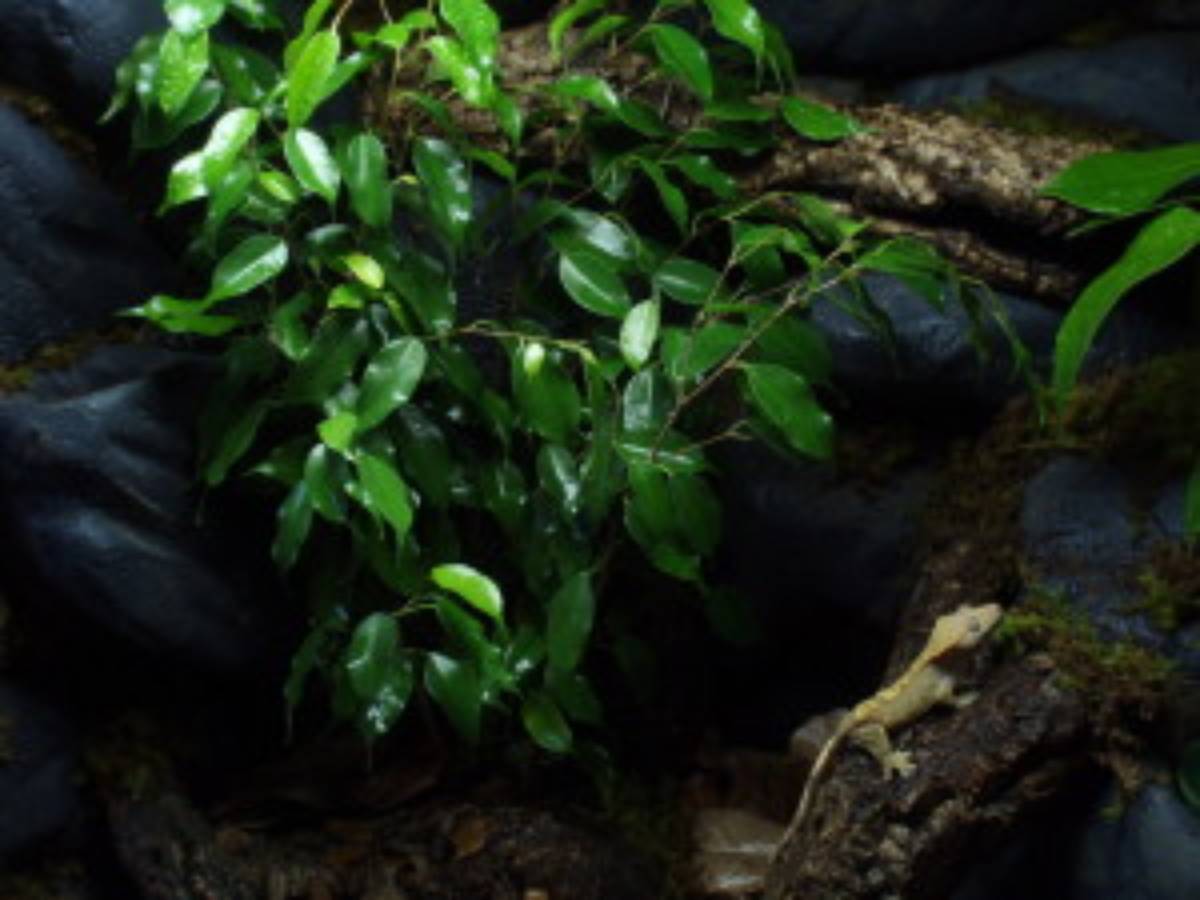
Once the foam has dried, it's time to carve the surface. The epoxy will not adhere to the smooth outer surface of expanded foam. By removing the outer surface, we reveal the porous inside that will allow the epoxy to adhere. Once the outer layer is removed, you may continue carving until you are satisfied with the structure. The carved dried foam will soon be covered in vivarium safe silicone and coco fiber, so it does not need to be perfect.
Next, put on gloves and move the enclosure to a well-ventilated area. Apply silicone in three to four inch sections on the foam and press handfuls of ground coco, dry peat or dry plantation soil into the adhesive.
Continue this process until the foam is completely covered. Refrain from applying silicone to the foam all at once, because the surface may dry before you get the chance to press the final layer. Allow one to two days for the silicone to dry in a well-ventilated area. There must be no detectable fumes in the enclosure before moving forward. 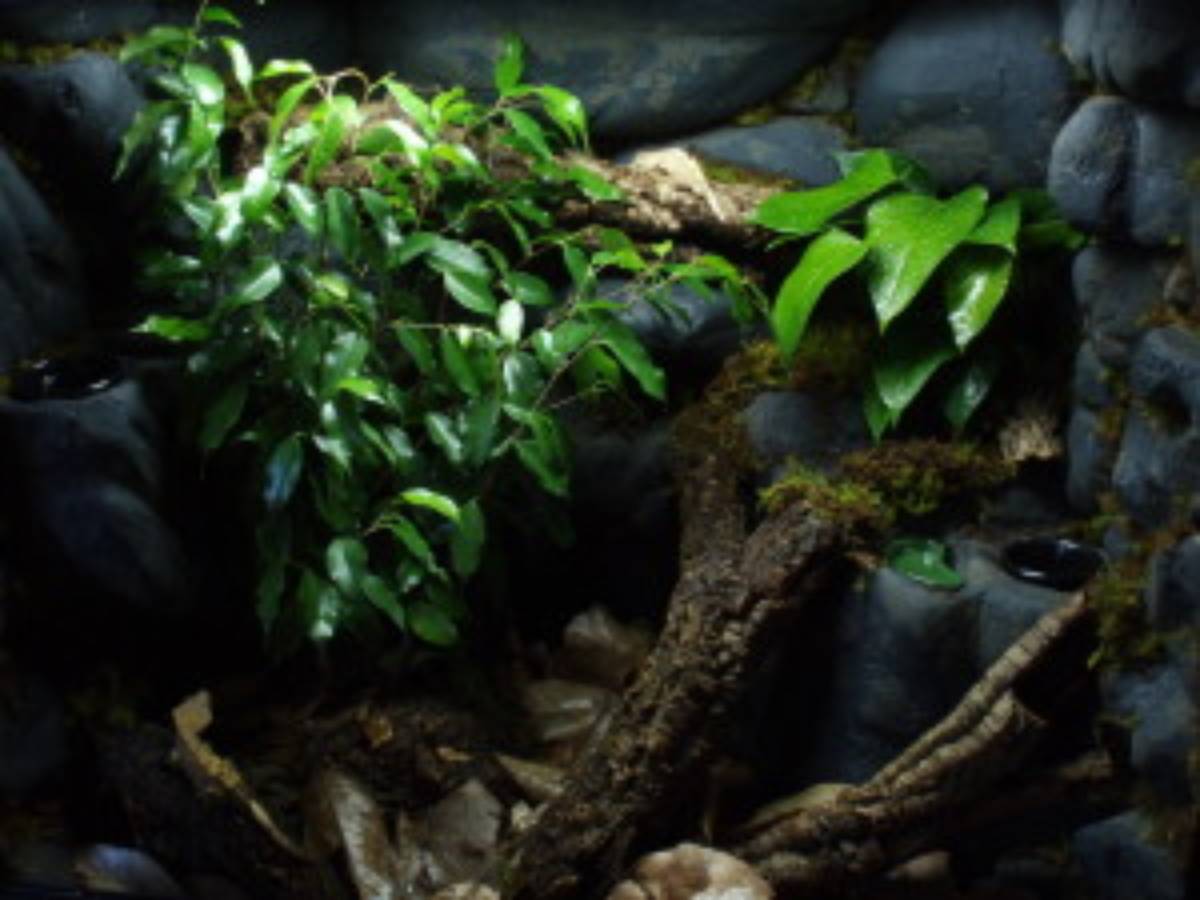
Substrate layers:
Layer 1: Tropical BioBedding is an excellent bioactive planting substrate, but does contain pieces of bark that can be harmful if swallowed. For this reason, we will be adding an additional layer of plantation soil to minimize exposure to impaction hazards. Use one bag of BioBedding per 10 gallons (two bags for an 18x18 footprint).
Layer 2: Large grade leaf litter such as magnolia or sea grape can be added to further maintain moisture in the substrate. This layer also allows for quick and easy routine fecal removal.
Clean-Up Crew:
Springtails and Isopods will take time to proliferate and act as a cleanup crew. Even in a mature vivarium, the waste produced by a crested gecko can overload the system. You will function as the primary cleanup crew by removing solid waste as it appears. Springtails will consume the mold that is acting to decompose the remaining waste.
Plants!
Planting begins once the substrate layers are in place. A successful vivarium houses plants that are well-suited to the environment and activity of the animal inhabitants. Crested geckos are relatively heavy, and can break the stems of many plants used in dart frog vivariums. Likewise, the lower humidity in crested gecko enclosures does not bode well for these plants. Each plant species offered on the Josh’s Frogs website is accompanied by a profile with care needs. Some will require direct watering and higher lighting, while others thrive with minimal effort. If you are new to plants, start with less demanding species. If you will not have the time or patience to tend to individual plants in the vivarium, avoid demanding species. If you are up for an indoor gardening challenge, choose whatever catches your eye!Low light, minimal watering: Pothos (all varieties) – A native plant on New Caledonia, and favorite of the crested gecko; easy to propagate and maintain Wandering Dude – Fast growing and easy to propagate; may break easily under the weight of an adult crested gecko; all cuttings can be replanted Cryptanthus – these bromeliads do well planted directly in the substrateLow light, moderate watering: Philodendron – A strong plant available in many colors, shapes and sizes. Excellent for crested geckos; will grow large in the vivarium Ferns – Flexible stems won’t break under the weight of the gecko; best if not allowed to dry out completely; provides beautiful ground cover Dieffenbachia – Strong stems and large leaves; striking centerpiece plants; can grow large enough to fill the vivariumModerate light, moderate watering: Vanilla planifolia – Beautiful accent plant, must be kept moistChristmas cactus – this epiphytic cactus will bloom readily once established!High light, cannot dry out: Bromeliads – typically anchored into the background; may dry out or break off in crested gecko vivarium; can be kept moist in plant baskets or planted in moist substrate.Once your crested gecko vivarium is planted, sit back and enjoy! 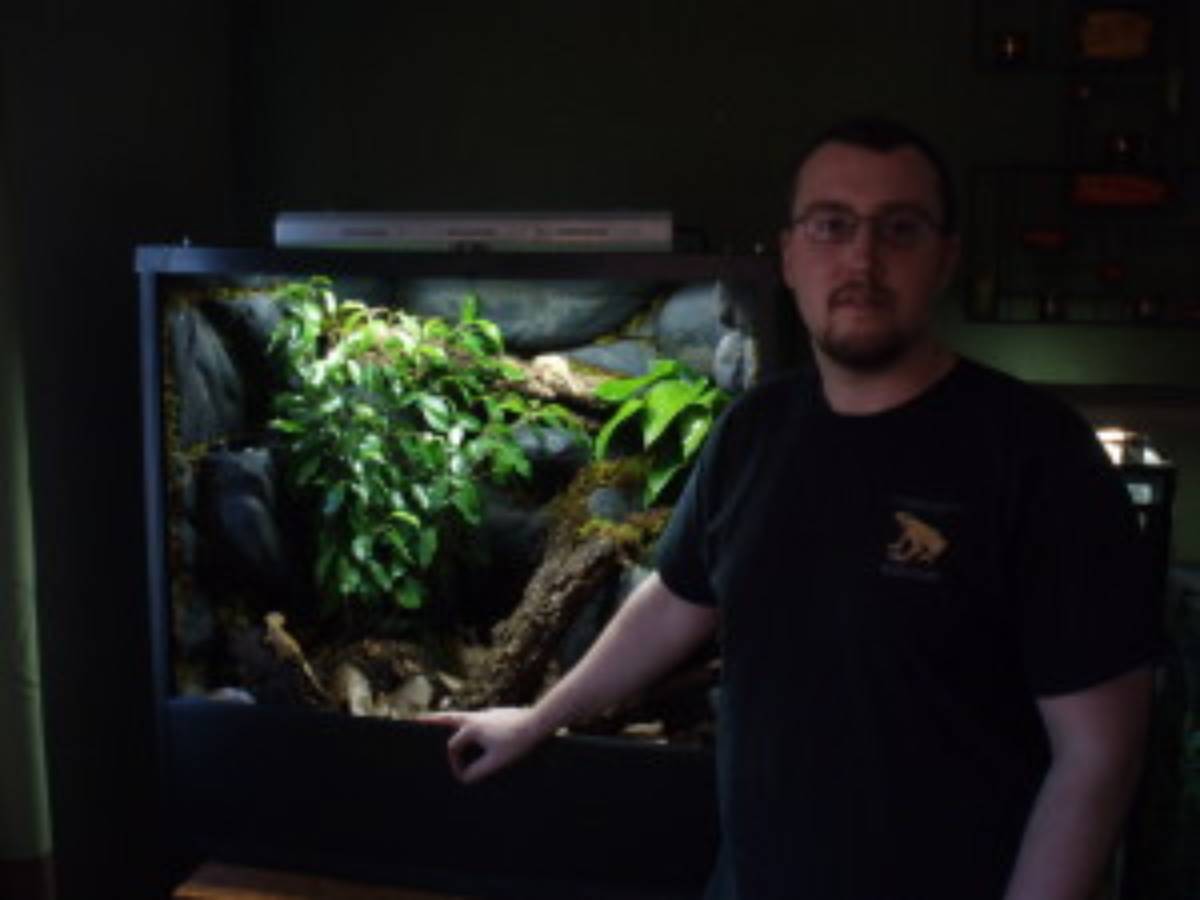
don't forget - JoshsFrogs.com has all of the supplies you NEED to build your crested gecko vivarium, and to keep your pets happy and healthy! We offer a full line of Live Terrarium Plants, Naturalistic Substrates, and Repashy Crested Gecko Diet, as well as Pangea Fruit Mixes.

